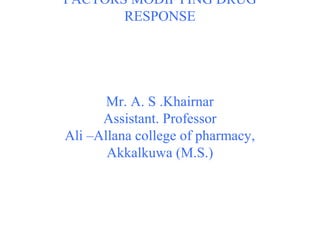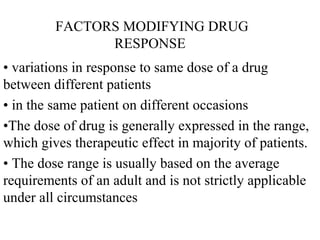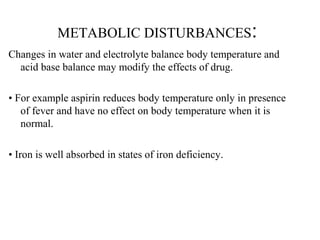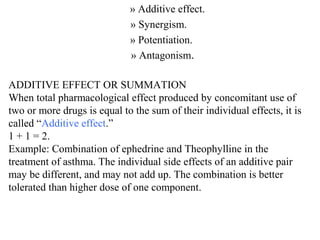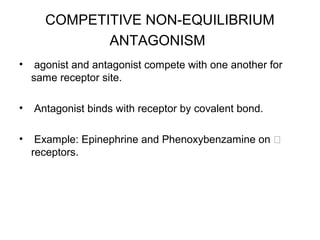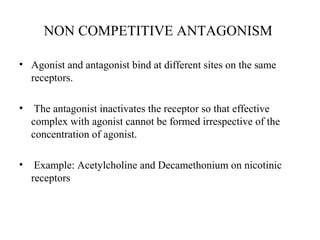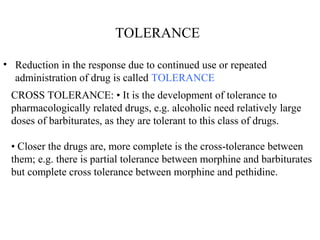The document discusses various factors that modify drug response, including body weight, age, sex, route of administration, genetic factors, and metabolic disturbances. It highlights how individual variations require careful consideration in drug dosage and administration to achieve therapeutic effects, as well as the potential for drug interactions that can lead to additive, synergistic, potentiating, or antagonistic effects. Additionally, concepts like tolerance and tachyphylaxis contribute to understanding drug efficacy and safety in different patient populations.
